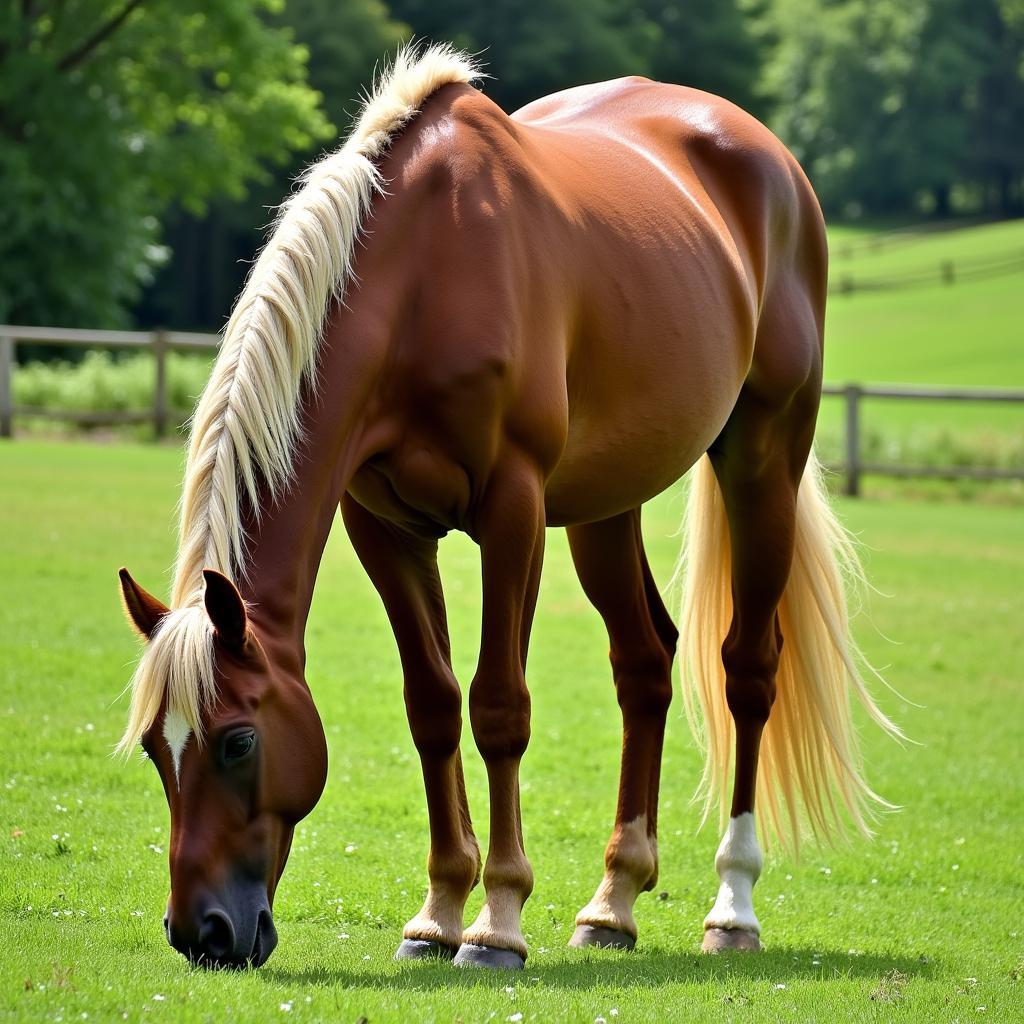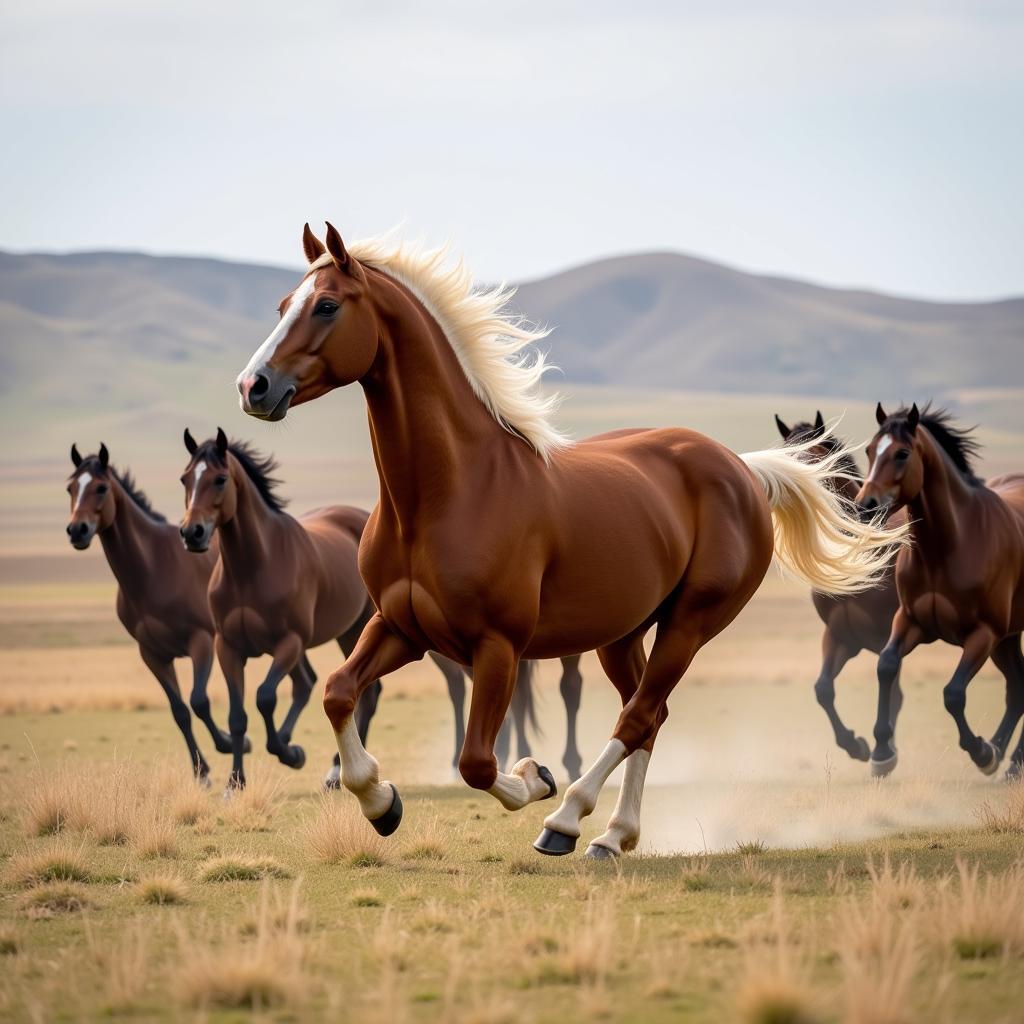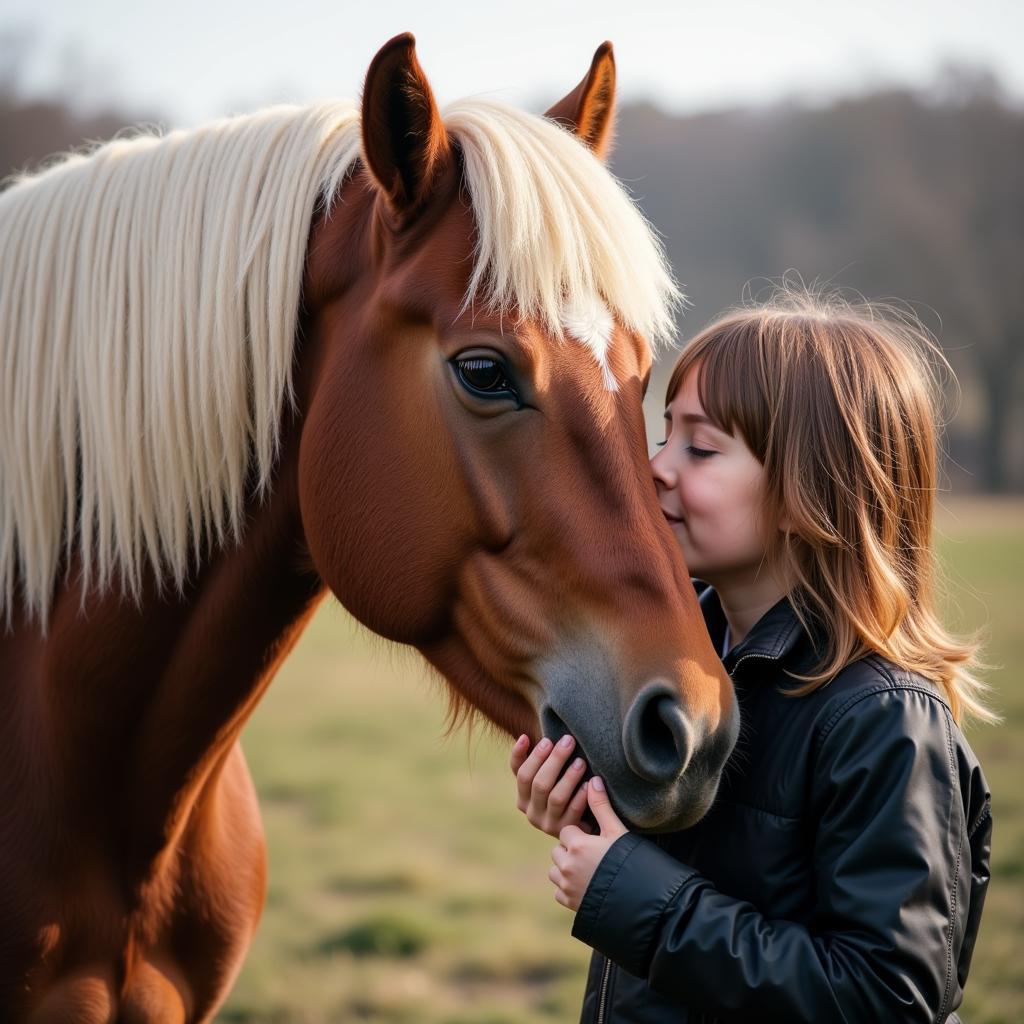A brown horse with a white mane is a sight to behold, a captivating blend of strength and elegance. This striking contrast is not just visually appealing, it also hints at fascinating genetic factors and potential breed influences. Whether you’re a seasoned equestrian or simply captivated by these beautiful creatures, this article delves into the world of brown horses with white manes.
The Genetics of Color: Why Some Brown Horses Have White Manes
The captivating appearance of a brown horse with a white mane is a result of specific genetic combinations. While the “base coat” of a horse is determined by a core set of genes, other genes act as modifiers, influencing aspects like mane and tail color.
Here’s a simplified breakdown:
- Base Coat: The brown coat is often determined by the presence of the agouti gene, which controls the distribution of black pigment. In brown horses, black pigment is typically restricted to the mane, tail, and lower legs, creating the distinctive brown body color.
- Mane & Tail Modifiers: Genes like the gray gene can impact the pigmentation of the mane and tail. In some cases, these genes can lead to a progressive lightening of the mane and tail, resulting in a white or near-white appearance even on a brown horse.
It’s important to note that genetics can be complex, and other genetic factors can also play a role in this unique coloring.
 Brown Horse With White Mane Grazing in a Field
Brown Horse With White Mane Grazing in a Field
Breed Connections: Exploring Potential Links
While the brown coat with a white mane can appear in various breeds, some breeds are more known for this striking combination than others. Here are a few examples:
- Morgan Horse: Known for their versatility and stamina, Morgan horses often display a rich brown coat with a flaxen mane and tail. This breed’s history is intertwined with the American story, making them a symbol of national heritage.
- Cleveland Bay: This British breed is recognized by its distinctive bay coat, often a rich, dark brown, and a flowing white or flaxen mane and tail. Cleveland Bays are known for their strength and calm temperament.
- Haflinger: Originating in the Austrian Alps, Haflingers are easily identified by their chestnut coat, which can range from a light gold to a rich, dark brown, and their striking flaxen mane and tail.
It’s crucial to remember that these are just a few examples, and the brown coat with a white mane can appear in other breeds and even mixed breed horses.
Caring for Your Brown and White Beauty: Tips for Owners
Owning a horse is a rewarding experience, and proper care is essential for their well-being. Here are some essential tips:
-
Grooming: Regular grooming helps maintain a healthy coat and strengthens the bond between you and your horse. Use a curry comb to loosen dirt and a body brush to remove it. Pay special attention to the mane and tail, using a detangling spray to prevent knots.
-
Nutrition: Provide a balanced diet of quality hay, grain, and fresh water. Consult with your veterinarian to determine the appropriate dietary needs for your horse based on breed, age, activity level, and overall health.
 Brown Horse With White Mane Running in a Herd
Brown Horse With White Mane Running in a Herd
-
Hoof Care: Schedule regular farrier appointments for hoof trimming and shoeing, if necessary. Proper hoof care is crucial for a horse’s soundness and overall mobility.
-
Veterinary Check-ups: Regular veterinary check-ups are vital for preventative care and early detection of any health issues. Vaccinations, deworming, and dental care are crucial aspects of horse ownership.
Beyond the Aesthetics: Appreciating the Whole Horse
While the striking appearance of a brown horse with a white mane is undeniably captivating, it’s important to remember that every horse is an individual.
When choosing a horse for companionship, riding, or any other purpose, focus on temperament, training, and overall health. The bond you build with your horse should extend beyond aesthetics, embracing their unique personality and spirit.
FAQs About Brown Horses with White Manes
1. Is the white mane on a brown horse always due to the gray gene?
Not necessarily. While the gray gene is a common cause, other genetic factors can also lead to a white or flaxen mane and tail on a brown horse.
2. Are brown horses with white manes more prone to certain health conditions?
No, the coat color and mane color do not inherently predispose a horse to specific health conditions. However, it’s crucial to provide proper care and schedule regular veterinary check-ups for all horses.
 Brown Horse With White Mane Nuzzling Its Owner
Brown Horse With White Mane Nuzzling Its Owner
3. Can a brown horse’s mane change color over time?
Yes, some horses, particularly those carrying the gray gene, may experience a gradual lightening of their mane and tail color as they age.
Exploring More About Horses:
Interested in learning more about different horse breeds or other aspects of equine care? Check out these informative resources:
- bird catcher spots horses
- gunsmoke horses for sale
- coaster horse
- black horse lego
- diy horse ornaments
A Final Note on the Brown Horse with a White Mane
The image of a brown horse with a white mane evokes a sense of timeless beauty and strength. Understanding the genetics behind this captivating combination and providing proper care for these majestic creatures enhances our appreciation for their unique qualities.
Remember, each horse, regardless of its color, deserves respect, love, and a fulfilling life.
Need expert advice on horse care? Contact our team at 0772127271, email us at [email protected] or visit us at QGM2+WX2, Vị Trung, Vị Thuỷ, Hậu Giang, Việt Nam. We provide 24/7 customer service for all your equine needs.